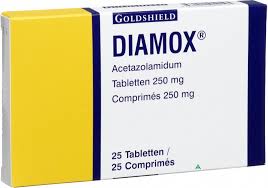
Slow ascent is the most effective method to prevent altitude illness. Medical management is prudent in these patients. Patients with stable coronary and pulmonary disease may travel to high altitudes but are at risk of exacerbation of these illnesses. Descent is mandatory for all persons with high-altitude cerebral or pulmonary edema. If this is not possible, or if symptoms occur despite slow ascent, acetazolamide or dexamethasone may be used for prophylaxis or treatment of acute mountain sickness. Slow ascent is the most important measure to prevent the onset of altitude illness.

It may appear in otherwise healthy persons and may progress rapidly with cough, dyspnea, and frothy sputum. High-altitude pulmonary edema is uncommon, but is the leading cause of altitude illness–related death. Onset is heralded by worsening symptoms of acute mountain sickness, progressing to ataxia and eventually to coma and death if not treated. It may progress to high-altitude cerebral edema in some persons. Acute mountain sickness is the most common presentation of altitude illness and typically causes headache and malaise within six to 12 hours of gaining altitude. This article is an approach to discussing travel and activity at high altitude, prevention of sickness, and acetazolamide prescription for non-specialists.Altitude illness affects 25 to 85 percent of travelers to high altitudes, depending on their rate of ascent, home altitude, individual susceptibility, and other risk factors. Some GPs may decide not to prescribe acetazolamide on this basis, or because they feel it is outside the scope of their practice. In the UK, prescribing acetazolamide for travel is an optional service, not included in the general practitioner’s contract.


2 3 4 5 Acetazolamide causes mild diuresis and increases renal excretion of bicarbonate, causing a mild metabolic acidosis which in turn increases respiratory rate (improving oxygenation). Acetazolamide can help to prevent acute mountain sickness developing and has fewer side effects than alternative drugs such as dexamethasone, which can mask symptoms and therefore carries greater risks. If this natural adaptation is surpassed by the rate of exposure to altitude, acute mountain sickness can occur. 2 Acclimatisation to altitude involves multiple physiological changes, occurring over days to weeks, which enable individuals to function better in these hypoxic environments. It is estimated that more than 100 million people per year travel to the hypoxic environments found at altitudes above 2500 m, 1 and at least 10% to 20% of unacclimatised individuals develop acute mountain sickness at this height. He asks you for a prescription of acetazolamide to prevent mountain sickness.įor most people, mountain sickness is a self limiting illness, but it can become life threatening. The most important treatment for altitude sickness is descent to a lower, more oxygen-rich environmentĪcetazolamide 125 mg twice daily can be prescribed as prophylaxis for those at risk of developing acute mountain sicknessĪ 25 year old man plans to trek to Everest Base Camp (5545 m) in Nepal for charity. Help prevent mountain sickness by slow ascents ≤500 m/day, rest days every third day, and avoid over-exertion


 0 kommentar(er)
0 kommentar(er)
